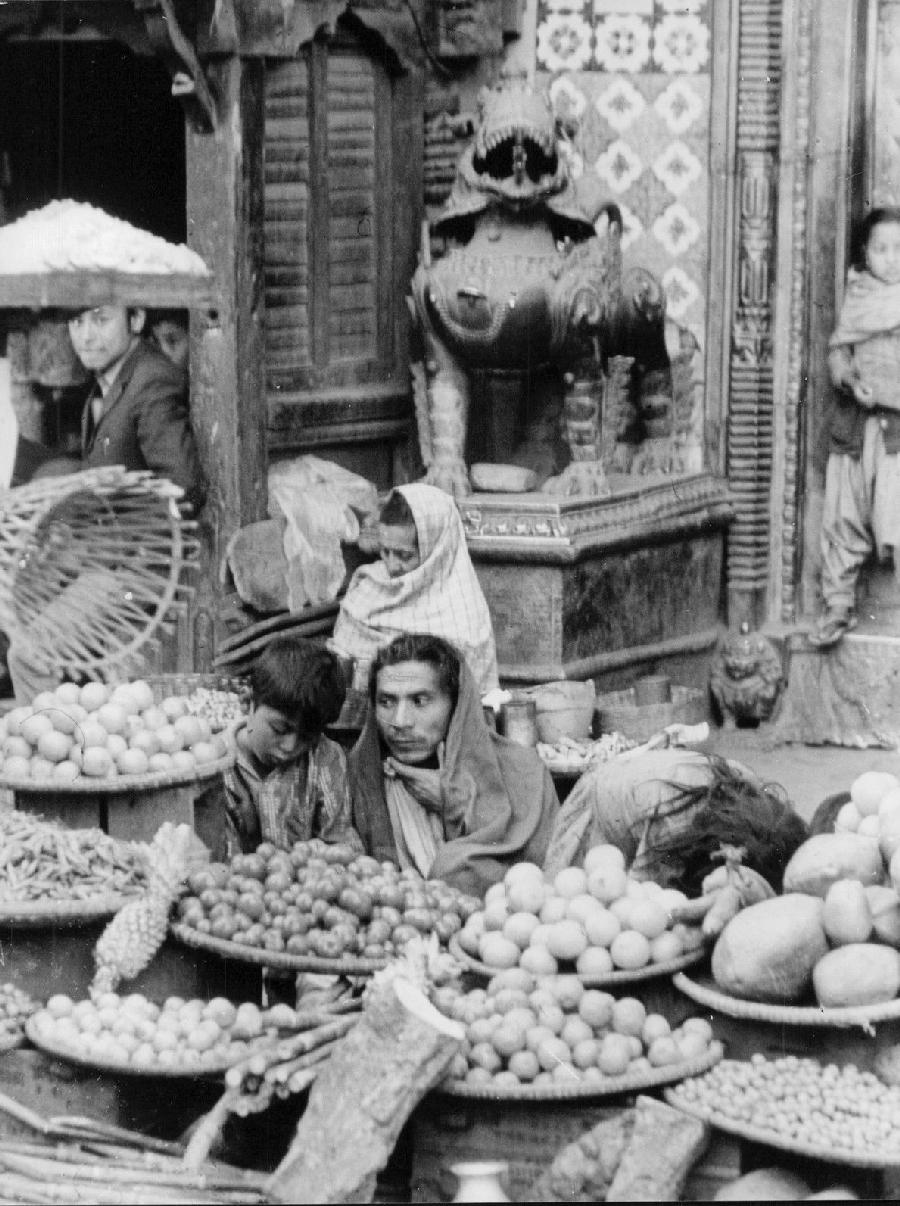
Nepal Economy

Figure 1.--This press photograph shows a Nepalese market in 1970. Markets like this at the micro level have continued to operate, but the statist orintion of Nepalese political leaders like the Maoist Communist Party has meant that the country lnguishes neao the botton of all countries in terms of per capita income and other economic indicators.
|
|
Nepal is a very poor country. Percapita income in 2016 was only about $2,500. One ranking places Nepal 199th out of 230 countries around the world. [CIA] The Nepalese economy is based on agriculture and herding, but it is changing. Servives now dominate the econnomy in terms of output value (50 percent) and is growing. Agriculture (35 percen) is still the next most important sector, but contracting. Industry (15 percent) is relatively limited and not growing. Agriculture while not the most important sector by value is still how most Napalis make their living (over 75 percent). Agriculture is this mounatneous country is mostly conducted in the Terai region bordering India. Crops include: tea, rice, corn, wheat, sugarcane, root crops, and fruit. Livestock poducts include milk and water buffalo meat. Industry primarily involves the processing of agricultural produce, including jute, sugarcane, tobacco, and grain. Modernizing the economy is limited by a shortage of skilled labor. Almost all of the country's trade is with India and China (Tibet). Nepal is still a tradition-bound country and many traditions inhbit economic growth. Remember that Nepal for centuries wa asociety virtuall unchanged from medieval times. A reader writes, "Nepal stil has a caste system. Also there a deparate coomunities: Nepalese, Tibetans, Sikhs, and Muslims. The unification of the groups into a national community is incomplete. The colonial layer from the British did not take those issues into account." Nepal like most of the countries that emerged from the post-World War II decolonization processs adopted statist-socialist policies. Unlike its neighbors to the north and south, there has been no significat effort at market reforms. A free market asessment reports, "Nepalís economy lacks the entrepreneurial dynamism needed for stronger economic growth and long-term development. Overall, weak reform efforts have failed to stimulate broad-based poverty reduction. The state continues to hinder private-sector development, and political instability further weakens the capacity to implement economic reform or create a stable development environment." [Heritage Foundation] A problem here has been political instability and ethnic divisions. The Communist Party of Nepal (Maoist-Center) is a strong force in Nepalese politics and does not support the business-friendly market policis that might help moderize the Nepalese economy as they have in China and India.
Sources
CIA. "Country comparison: GNP--Country compaisons GDP percapita," World Factbook.
Hritage Foundation. "Nepal," 2017 Index of Economic Freedom.
HBC

Navigate the Boys' Historical Clothing Web Site:
[Introduction]
[Activities]
[Biographies]
[Chronology]
[Cloth and textiles]
[Clothing styles]
[Countries]
[Topics]
[Bibliographies]
[Contributions]
[FAQs]
[Glossaries]
[Images]
[Links]
[Registration]
[Tools]
[Boys' Clothing Home]
Navigate the Boys' Historical Clothing national pages:
[Return to the Main Nepal page]
[Return to the Main Asian economies page]
[Return to the Main Asian page]
[Afghanistan]
[Bangladesh]
[Bhutan]
[Cambodia]
[China]
[India]
[Indonesia]
[Malaysia ]
[Pakistan]
[Singapore]
[Sri Lanka]
[Tajikistan]
[Tibet]
[Turkmenistan]
[Uzbeckistan]
Created: 1:48 AM 8/16/2017
Spell checked: 10:36 AM 7/17/2019
Last updated: 10:36 AM 7/17/2019



